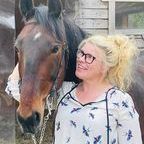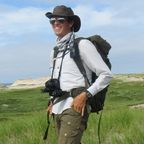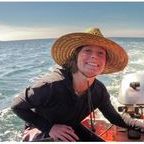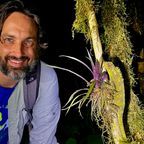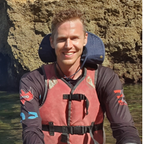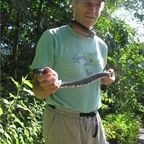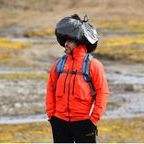Animal
The Session information is all still subject to change.
A2 - From the lab to the field: incorporating environmental relevance into experimental biology
Session Description
While experiments conducted in controlled settings allow for a more precise understanding of physiological mechanisms, laboratory experiments are inherently removed from ecological reality, and are, thus, abstractions of what organisms in the wild experience when faced with multiple stressors. This session will present an exploration of techniques, procedures and approaches employed by researchers attempting to bridge the laboratory-field divide by explicitly designing projects with environmental relevancy in mind. This includes approaches such as field manipulations, natural experiments and mesocosms that incorporate natural fluctuations into experiments on organismal performance, physiology and responses to biotic and abiotic stressors.
This session has kindly been sponsored by Pyro Science , Con Phys and Canada society of Zoologists



A3 - Genome Architecture and Polyploidy in Animals and its role in the evolution of physiological plasticity.
Session Description
This session proposes to gather people (Animal and Cell Sections) interested in whole-genome duplication, polyploidy, and other genome architecture features, such as chromosomal fusions and fissions, gene family expansions, and their connection to physiological plasticity in animals. Genomic traits and structure-function variability and coevolution will be discussed, with examples from vertebrates and invertebrates, aquatic and terrestrial. The goal is to detect possible signals relating genome size and architecture in animals and diversification and adaptation to distinct habitats. The session will have a special focus on temperature and osmo- and ion-regulation, including evaluation of invasive potential and resilience to climate change.
A4 - Innovative Methods and Techniques in Biomechanics
Session Description
This session is dedicated to the latest advancements of hardware and software tools in biomechanics and related fields. We welcome talks and posters on pioneering techniques for data collection and analysis, including, for example, the implementation of machine learning and robotics assistance in kinematic studies, novel data organization tools, and new measuring techniques. Researchers at all career stages will be able to discuss the development of cost-effective and powerful tools, paving the way for interdisciplinary collaborations and novel time-efficient approaches in biomechanics.
A5 - Interdisciplinary approaches in bioacoustics: cells, behavior, and mechanics
Session Description
The recent increases in computational power, imaging resolution, and quality of sound recording devices have allowed for very fast advances in bioacoustics. This session aims to cover the progress made in acoustics and communication through novel and state of the art interdisciplinary techniques. In particular, it will highlight advances in our understanding of: (i) the biomechanisms of tympanal auditory systems, and (ii) communication within and between species. Hence, the focus of the session will be on how acoustic information is processed across distantly related animal groups, offering insights across acoustic systems and how they interact within an ecosystem.
A6 - Invisible friends: microbiome in eco-evolutionary research
Session Description
All organisms harbor microbes, and their key role on host animal health and disease is established. However, causative data from wild species and populations is still relatively scarce, and taxonomical coverage in microbiome studies is limited. Insights into which factors shape the communities of microbial symbionts, what functional roles they provide to the host, and how they contribute to host adaptation still remain to be explored. This symposium will highlight novel findings in eco-evolutionary host-microbiome research across animal taxa, encompassing fine-scale molecular and physiological questions, broadening to whole organism and population level approaches, while also addressing methodological and theoretical issues.
A7 - Embracing Variability: Why It Matters and What To Do With It?
Session Description
Variation is inherent and foundational to all life on earth. Yet researchers have historically focused on “the Golden Mean”. This session will highlight how researchers are embracing variability by incorporating environmental realism into experiments, and investigating sources of variability in data. Day 1 will focus on environmental variability - discussing lessons learned, outstanding questions, and best practices to mimic real-word scenarios in the lab. Day 2 will focus on variability in our data - answering the questions “How does variability arise - through experimental differences and/or performance differences in organisms?”, “What does it mean?”, and “How best to report it”.
A8 - Links between physiology and behaviour in a changing world
Session Description
Animals have the ability to respond physiologically and behaviourally to environmental change with survival often predicated on the interaction between the two. Behaviour is key for understanding how anthropogenic environmental changes affect the resilience of animal populations. The goal of this session is to focus on the interplay between behaviour and physiology and how this allows ectothermic and endothermic animals to respond to environmental change (e.g., temperature, desiccation, hypoxia, pollutants). The session will showcase the importance of multi-disciplinary research and the importance of a whole organism approach when studying environmental change.
This session has kindly been sponsored by The Company of Biologists and Con Phys
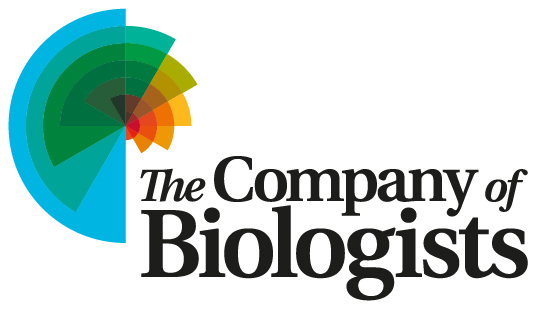

A9 - Mechanics of mechanoreception across scales and kingdoms
Session Description
From the metaphorical spider sense, to plants acting on mechanical stimuli, like "mimosas" and venus fly traps, almost all organisms use mechanical input. From the lateral line organ in fish, to elephant feet and infra-sound communication, sound perception is a complex mechanical transduction process, which is instrumental in a wide variety of behaviours from mating to predation. Mechanical feedback loops also play an important role in locomotion, in knowing body position and surrounding fluid dynamics.
A10 - Membrane and epithelial transport physiology across taxa
Session Description
This session will focus on the mechanisms of membrane and epithelial transport in various animal groups ranging from mammals to basal metazoans. This includes ionic and pH regulatory systems underlying homeostasis, biomineralization, excretion and blood gas transport amongst other important physiological functions. These membrane transport systems are a fundamental requirement for life. Function and dysfunction of these transport systems are ultimately associated with health and disease in animals and humans and their capacities to cope with changing environmental conditions. This session invites physiologists using different animal systems to study the mechanisms of membrane and epithelial transport.
A11 - Not all stress is bad: Understanding protective stressor interactions in changing environments
Session Description
Contemporary environments encompass a growing number of interacting stressors for animals to navigate. But not all stressor interactions spell trouble. Protective interactions, like cross-tolerance, are pivotal in aiding animal persistence in multi-stressor environments. Cross-tolerance occurs when exposure to a stressor heightens an organism’s resilience to a second stressor. Cross-tolerance has been documented across animal taxa from a diversity of habitats and in response to many stressors (e.g. hypoxia, predation, desiccation, pathogens, crowding, salinity, food limitation). Remarkably, cross-tolerance has even been documented among emerging, anthropogenic stressors, such as heatwaves and microplastics. In this session we will hear presentations discussing the prevalence of cross-tolerance, the mechanistic underpinnings of protective stressor interactions, and the adaptive significance of these interactions in variable and changing habitats.
This session has kindly been sponsored by Con Phys and Frontiers Media limited


A12 - OMICs in Comparative Animal Physiology
Session Description
The development of new high-throughput technologies for measuring the transcriptome, proteome, and metabolome of tissues is revolutionizing the understanding of how tissues function and respond to stressors. Adopting these approaches in comparative physiology has the potential to gain unprecedented insight into the physiological mechanisms that support animals’ responses to environmental change and adaptations to novel environments. This session will cover the latest comparative physiological omics research and discuss the emerging opportunities and potential challenges that these techniques bring to the field.
A13 - Powering through: Mitochondrial plasticity and homeostasis under physiological challenges.
Session Description
Aerobic life relies on mitochondria. Any physiological stress resulting from either extreme performance or external stressors, applies pressure on cellular homeostasis and subsequently, the mitochondrial workload. This organelle orchestrates many aspects of cellular homeostasis, including energy production, ion balance, redox state, signalling and apoptosis. Mitochondrial plasticity is therefore key for high performers in the biosphere, that have adjusted genetic and/or phenotypic traits to survive fluctuating environments and extreme physiology. The objective of this session is to delve into the current knowledge that underpins the multifaceted aspects of mitochondrial function enabling species performance in challenging physiological and environmental conditions. This includes how species may perform under demanding or challenging conditions that may comparatively translate to pathological states, as well as how species survive either chronic or acute stressors such as temperature, oxygen, and ion fluctuations.
A16 - Tipping the scales: Balancing energy acquisition, expenditure, and allocation in an ever-changing world
Session Description
Maintaining energy balance is critical for the survival of organisms and is becoming increasingly difficult under environmental change. Trade-offs, which result as a disruption in energy supply or demand, are fundamental to biology and are often imposed to explain variation in traits related to fitness. Since energy is a universal currency, it is often assumed that its acquisition (e.g., feeding) and expenditure (e.g., metabolic rate) set the limits for which resources can be allocated towards fitness enhancing processes such as maintenance, growth, and reproduction. Under climate change, warmer and more variable habitats are expected to increase metabolic rates (and thereby the cost of living) while reducing food availability in the environment of many organisms. Despite strong theoretical foundations formed over the past 40 years, it remains unclear how common these energy trade-offs are in nature, and how they might be mediated – either via greater energy reserves or energy saving mechanisms (such as mitochondrial efficiency). This session invites talks and posters on variation in energy acquisition (e.g., feeding, energy stores), expenditure (e.g., metabolism), and allocation (e.g., maintenance, life-history traits) from subcellular to whole animal and population-level processes, to improve our understanding of energy trade-offs.
This session has kindly been sponsored by Con Phys

A17 - Exploring the Mechanisms, Processes, and Evolutionary Impacts of Transgenerational Plasticity
Session Description
Plastic responses in morphology, physiology, and/or behaviour can buffer environmental stressors, thereby helping organisms to maintain fitness. This meeting will focus on phenotypic changes that occur across generations (trans- and multiple generations) in all animals and discuss laboratory and in situ experiments combining molecular, behavioural, life history and whole-organism physiology approaches. We welcome submissions that consider 1) epigenetic (DNA methylation, miRNAs, histone modifications) and hormonal mechanisms of transgenerational plasticity and how these may shape the molecular phenotype and metabolism of cells (including transcriptome, proteome and metabolome), 2) behavioural inheritance (transgenerational plasticity of behavioural traits, social learning), 3) the evolution of transgenerational plasticity (adaptive plasticity, costs and limits of plasticity), and 4) the role of transgenerational plasticity in evolutionary change (e.g., plasticity as key strategy to buy time for genetic adaptation when populations are confronted with rapidly changing or novel environments).
A18 - Phenotypic plasticity and acclimation mechanisms in a changing world
Session Description
Phenotypic plasticity allows species to cope with fluctuations in their environment. It is thus seen as the main route by which species may adjust to rapidly changing environmental conditions. However, there are still many unanswered questions regarding the capacity it provides for adjusting to anthropogenic stressors. For instance, why are some species and some traits more plastic than others, why are some stressors more likely to induce a plastic response than others, how do the mechanisms underlying intergenerational plasticity compare to those operating within an individual and why is there interspecific variation in the plasticity rate (i.e. the rate at which the phenotype changes)? Of particular relevance in a changing world is the plastic phenotypic response referred to as acclimation. The capacity of animals to cope with heat waves is likely to depend on their acclimation capacity but also their rate of acclimation. Despite frequent tests of acclimation (particularly in relation to thermal challenges), understudied aspects of acclimation remain. For example, what physiological mechanisms underlie acclimation? How long do animals require to fully acclimate? And what limits acclimation capacity? We are interested in showcasing the dynamics of acclimation and underlying mechanisms that allow animals to acclimate to various environments, as well as the factors which may affect how they acclimate. The session will first cover general phenotypic plasticity, with a more specific focus on the dynamics and mechanisms of thermal acclimation in the second session.
This session has kindly been sponsored by American Physiological Society .
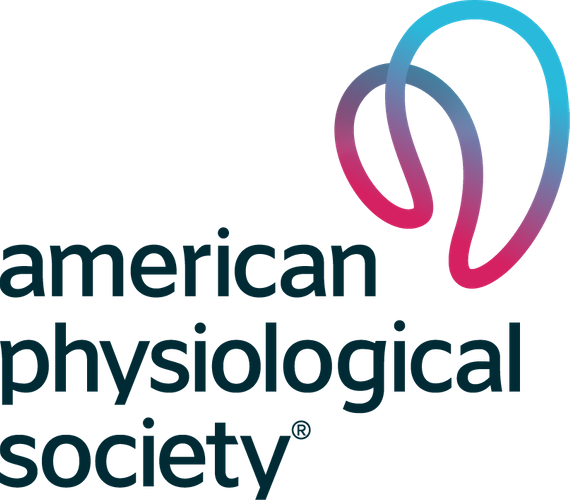
This session has kindly been sponsored by PyroScience

A19 - Vertebrate Cardiorespiratory Physiology
Session Description
The function of the cardiorespiratory system determines many aspects of animal performance, from coordinated responses to environmental change to evolutionary adaptations that supported major transitions in vertebrate evolution. This session will bring together researchers working on the broad field of cardiovascular and respiratory physiology to present and discuss the recent advances in the field, including sub-themes such as cardiovascular physiology, blood gas transport, acid/base regulation, and metabolic physiology. The session will showcase research at all levels of biological organization that seeks to understand basic mechanistic physiology, responses to environmental stress, or evolutionary and developmental physiology in the context of the cardiorespiratory system.
A21 - Biomechanics
Session Description
Biomechanics is the study of mechanical principles and function of biological systems, ranging from the molecular to the organismal level, and beyond, including interactions with the environment. As such, the SEB Biomechanics Group brings together scientists from a wide range of disciplines, including zoologists, botanists, molecular biologists, physiologists, kinesiologists, mathematicians, engineers, biomimeticists, and computer scientists.
The SEB Annual Conference showcases Biomechanics presentations in a podium presentation session and poster sessions on the application of biomechanics to any topic, including swimming, flying, terrestrial locomotion, feeding, functional morphology, muscle-tendon mechanics, damage and repair of materials, in animals and plants. We also run special topic sessions with recent foci including food processing across animals, mechanics of mechanoreception, and biomechanics in the wild.
A22 - Open Animal
Session Description
The Open Animal Biology session covers the whole breadth of animal biology, and therefore will contain those talks and poster presentations which don’t fit into the specific Animal Biology sessions. As much as possible presentations will be organised together with similar subject groups/themes, each set of talks acting like its own small session. This is therefore an interesting and important part of the scientific programme, with high quality presentations from across the animal biological spectrum.
Session Aims & Objectives
The session is open to all animal biology research areas, and from speakers of all levels of experience. We particularly encourage presentations by post-grads, post-docs, and early career scientists.



















